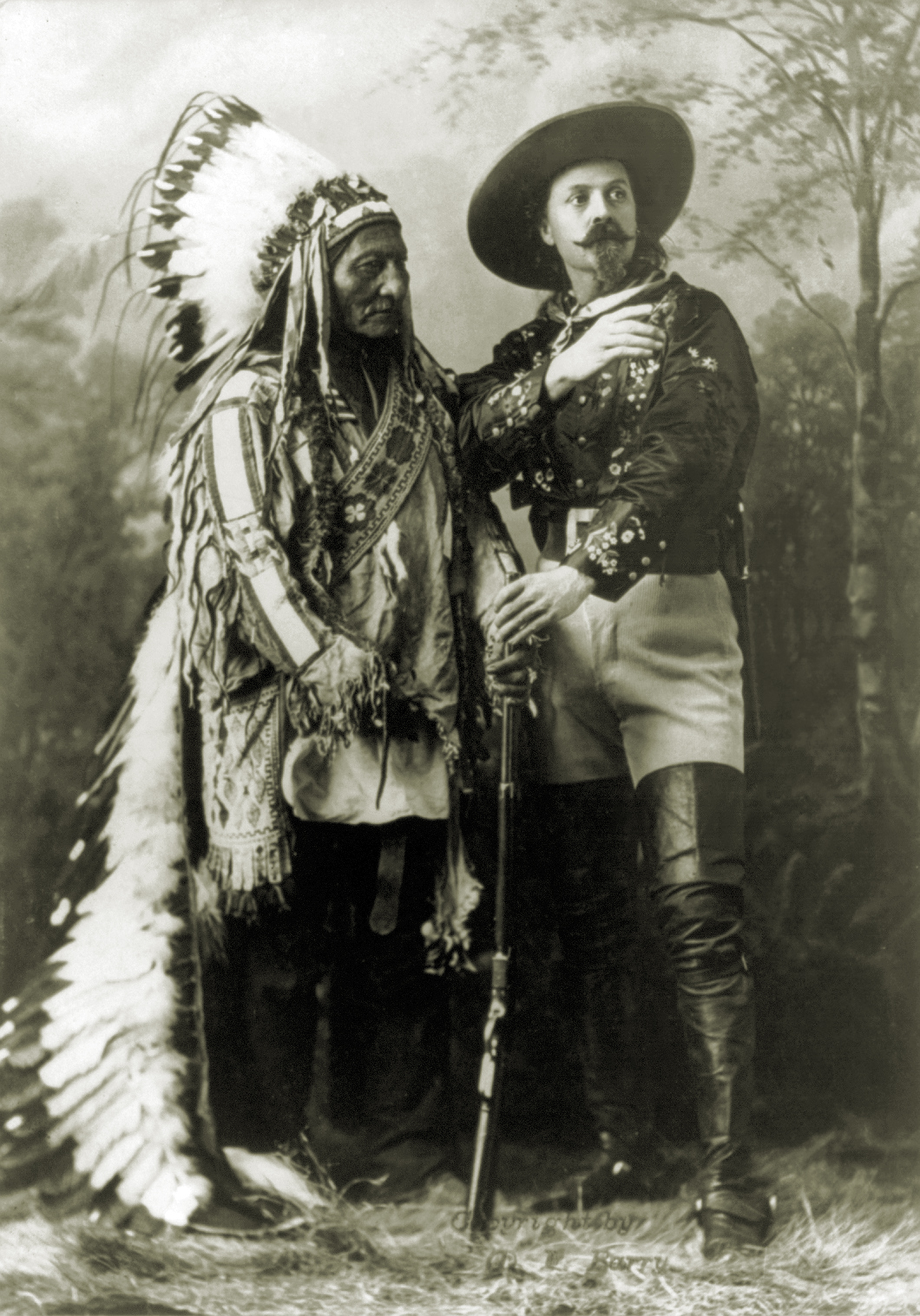When asked how many dime novels are in the Buffalo Bill Historical Center collection, even John C. Rumm, acting curator of Western American History at the Buffalo Bill Museum, can only take his best shot. “I’m guessing there are 800 to 1,000 related to Buffalo Bill,” Rumm says. “It’s one of the largest there is.”
The original museum in Cody, Wyo.— the namesake town William F. “Buffalo Bill” Cody helped found—dates from 1927, established in a 50-by-70-foot log cabin by Mary Jester Allen, Cody’s niece, and her friends. The museum eventually outgrew that space, and the cabin now serves as the city visitor center.
After adding the Whitney Gallery of Western Art in 1958 and the Plains Indian Museum in 1969, the museum moved into a new space across the street, christened the Buffalo Bill Historical Center in 1969. The 300,000-square-foot, five-museum complex also houses the Cody Firearms Museum (which opened in 1976) and Draper Museum of Natural History (2002), as well as the Harold McCracken Research Library. With an annual budget of approximately $8.8 million, the privately owned center draws some 200,000 annual visitors. It houses 50,000 artifacts—an average of just 6 percent is displayed at any one time—while the library contains more than 500,000 photographs and negatives, 315 manuscript collections and more than 30,000 books.
Among the books, the dime novels hold a special appeal. Buffalo Bill, the King of the Border Men, written by Edward Zane Carroll Judson (aka Ned Buntline), turned the frontier scout and hunter into a national celebrity when it started its serial run in Street & Smith’s New York Weekly on December 23, 1869. Other novels quickly followed, especially during Cody’s 1872–86 run as a theatrical performer (“The product was sold with the play to promote the play,” Rumm says, “and the novels also promoted the plays”) and later during Cody’s fabled run with his Wild West extravaganza that toured America and Europe and brought the Western story to the world.
“By 1900,” Rumm says, “more than one billion words had been printed about Cody.” The collection of dime novels includes works by Buntline as well as Colonel Prentiss Ingraham, who wrote hundreds of novels and novelettes featuring Cody. The museum collection includes international editions published in Germany, France and other European countries—after all, Cody had gained worldwide fame long before his death in 1917. “After the Civil War, the demand for dime novels accelerated,” Rumm says. “Even cultured people read them. Mark Twain and Zane Grey were influenced by them.”
The Buffalo Bill Museum isn’t just about dime novels. At 14,800 feet, it houses many artifacts from Cody’s illustrious career and legendary life. Posters capture his Wild West shows, as do early film clips of a performance. Visitors will also find such artifacts as a watch presented him by the duke of Turin and a gold-and-diamond buffalo head stickpin with ruby eyes, a gift from Grand Duke Alexis of Russia in 1872. The remains of Lucretia Borgia, Cody’s famous breechloading .50-caliber Springfield rifle, are showcased, along with other weapons.
Outside stands Cody’s boyhood home, the two-story house from LeClaire, Iowa, where the family moved when Cody was 3 years old. The Codys lived there until 1853, when the family moved to Kansas. Restorers brought the house to Cody in the 1930s and moved it to the current museum grounds in 1970.
The museum collections stretch beyond the man to interpret other aspects of the West, from cowboys to conservation. In the 1980s, then-curator Paul Fees oversaw redevelopment of the museum. Rumm says it’s time for another change, incorporating more recent scholarship and making the museum more kid-friendly. He foresees a museum that tells Cody’s story in the words of the showman and his contemporaries while combining artifacts and displays that will introduce the Western icon to new generations. “We have to make Cody relevant to people today,” Rumm says, “and not just a romanticized holdover from the 19th century.”
The Buffalo Bill Historical Center, at 720 Sheridan Ave., is open daily except Thanksgiving, Christmas and New Year’s Day and is closed Mondays between January and March. Hours vary depending on the season. Admission is $15 for adults, $13 for seniors, $10 for students 13–17 (or 18 and over with a valid college ID), and $6 for children 5–12. A family rate of $40 is available, and group rates are also provided. For more information, visit www.bbhc.org or call (307) 587-4771.
Originally published in the February 2009 issue of Wild West. To subscribe, click here.





